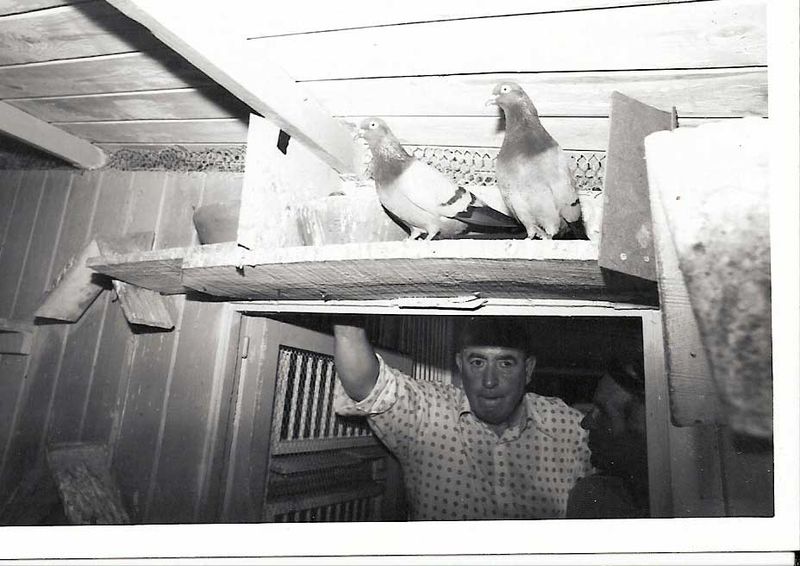Training Tipplers (Gordon Hughes)
Dark Training
Published: June 1970 / Pigeons & Pigeon World
NTU England – Flying Tippler
I have also been asked by what method I train my birds to fly in the dark. Well, in the first place, before attempting to do this I must look some time ahead and make sure that my youngsters are fully trained to do their job in the daylight, as when they are earmarked for dark flying as yearlings, then if they have made either no mistakes, or the minimum number of mistakes as youngsters, then this is something towards their training in the dark. I start off at the end of February or even well into March, according to the weather, with a kit of yearlings such as I have just mentioned. Whilst still keeping them very fit, I adjust their food in order to make them very sharp and looking for food. I then liberate them one at a time as early in the day as possible, in order to get them down well before dusk. I do this for some days until the kit can be turned out as a kit, and fly for a reasonable time. I then adjust the food and make the birds sharper still, whilst watching them very carefully in order to keep up their fitness. After this has been done, I commence to liberate the kit one hour or less before dark.
The birds will alight during the daylight, but close to dark. I then leave them to stay upon the loft top, placing the lights on at dusk, and leave them there with the droppers for at least one hour into the dark. During this period, I remain with he birds all the time in order to ensure that they are not disturbed by cats. Every endeavor must be made during this period to try to get the birds to move around the loft, and flutter up and down, to get them used to alighting upon the loft in the dark. The easiest way to do this is to have a small loft apart from the main one, and entice them to fly from one loft, and backwards and forwards, by offering them a grain or two of barley. Of course, a separate light must be fixed on the small loft. I use two 100 watt bulbs on the main loft suspended about three feet above the roof, with shades to guide the light downwards. A 60 watt bulb is ample for the small loft. The birds must not be frightened at any time, and you must endeavor to gain their confidence, and teach them to know you and the loft surroundings by dark as they would in the daylight.
When you have done this as I have mentioned for at least a week, the kit can be turned out at dusk, they should be then left for no more than a few minutes, before the lights are turned on, and the droppers released. They should then be attracted back down to the loft as soon as possible. If the birds are not really hungry and sharp at this stage, they may decide to stay out until daylight of the next day and consequently be of no further use for dark flying.
If one is successful at attracting the birds down onto the loft at the first attempt, then a little more food should be given, and gradually the birds will fly longer in the dark, and come down obediently when the lights are put on and droppers released. In the first few weeks of dark flying, the patience and care of the fancier will make or break, both himself and the birds. The kit will usually not alight back onto the loft in the dark until they have split away from one another and they may fly for hours on their own in the dark. This will test the endurance of the fancier and if he wants to be successful, he must wait for his birds, at the same time keeping his droppers moving. This may entail waiting for up to three hours for and extra-fit bird to come. The weather may be very cold, very wet, or to some other extreme, but it is no use leaving a bird out al night, because once it has done this, it is more than likely to do it again.
Gordon Hughes – Derby

